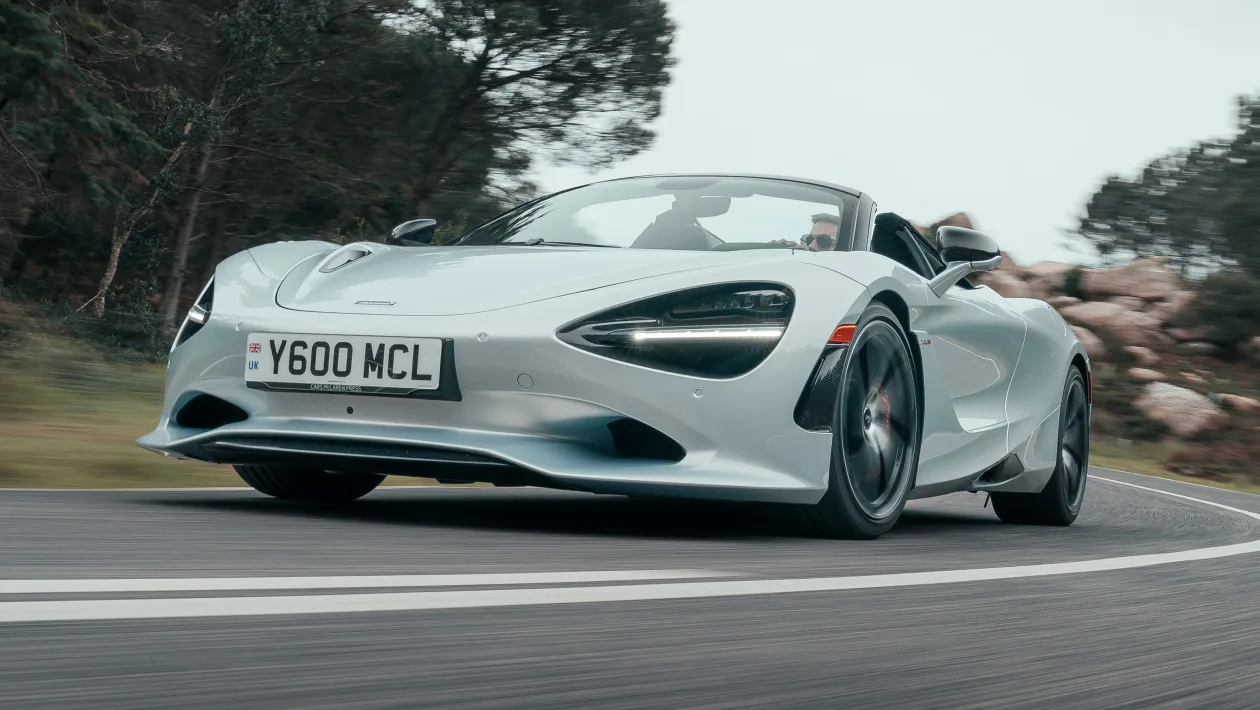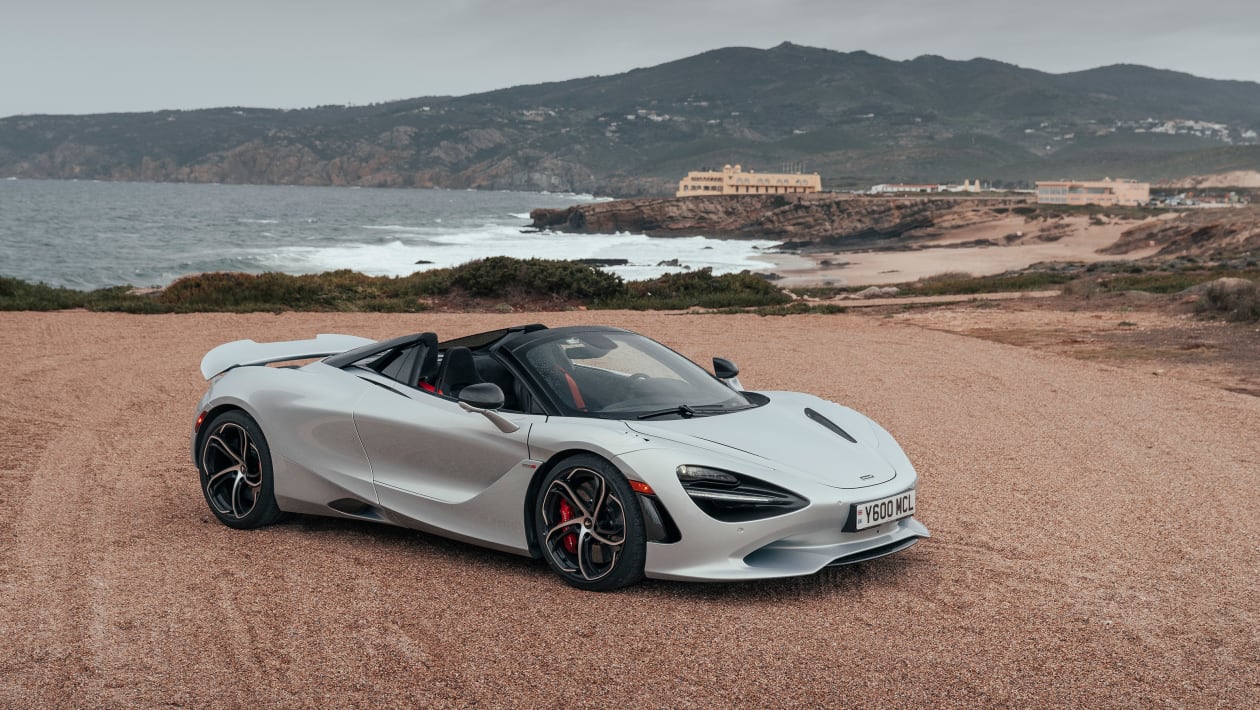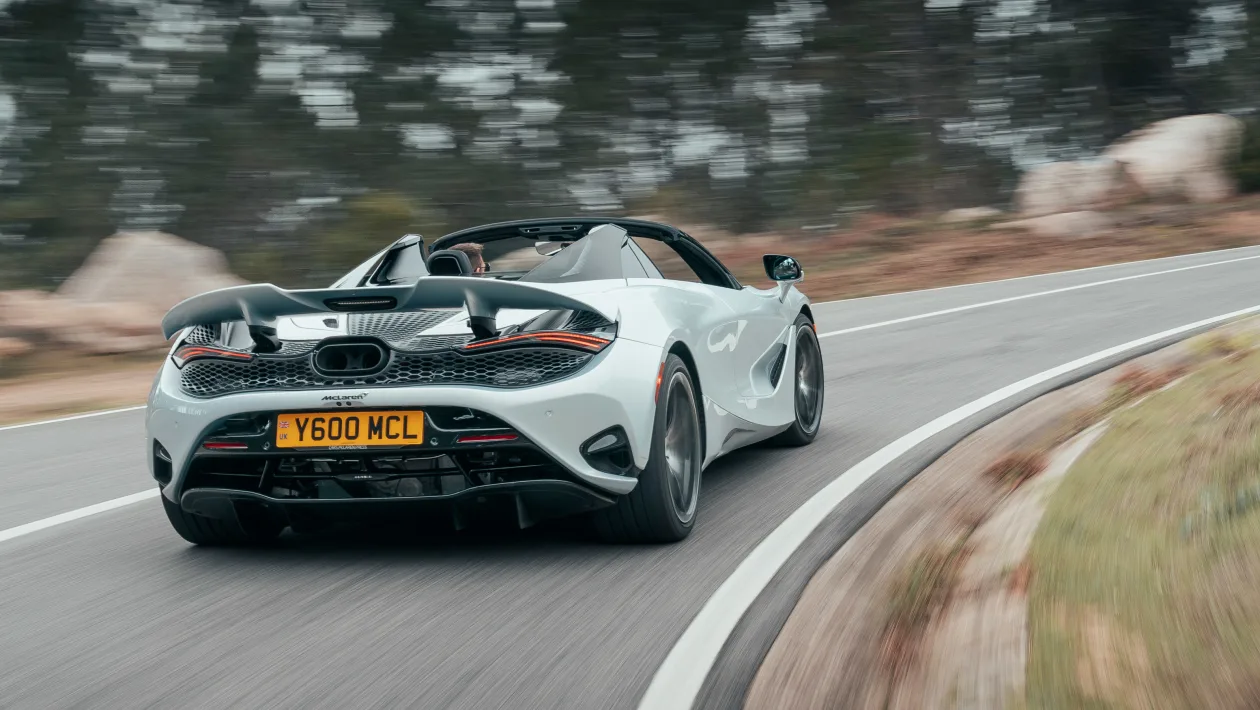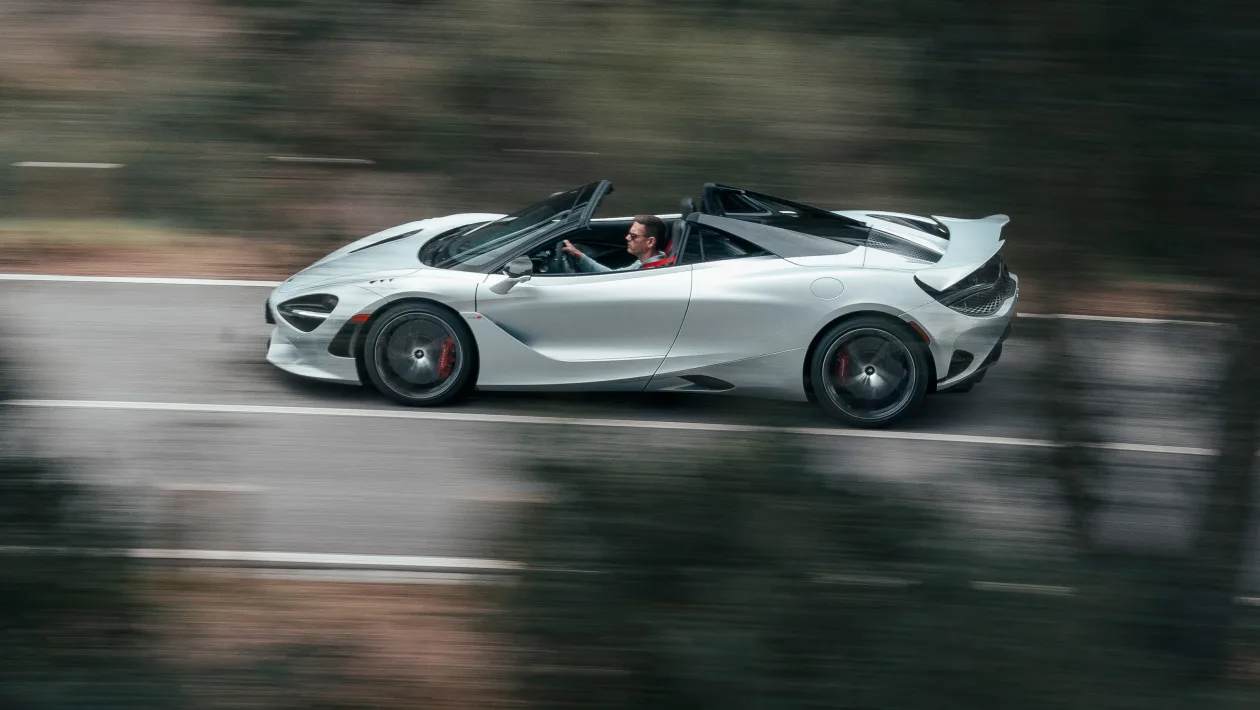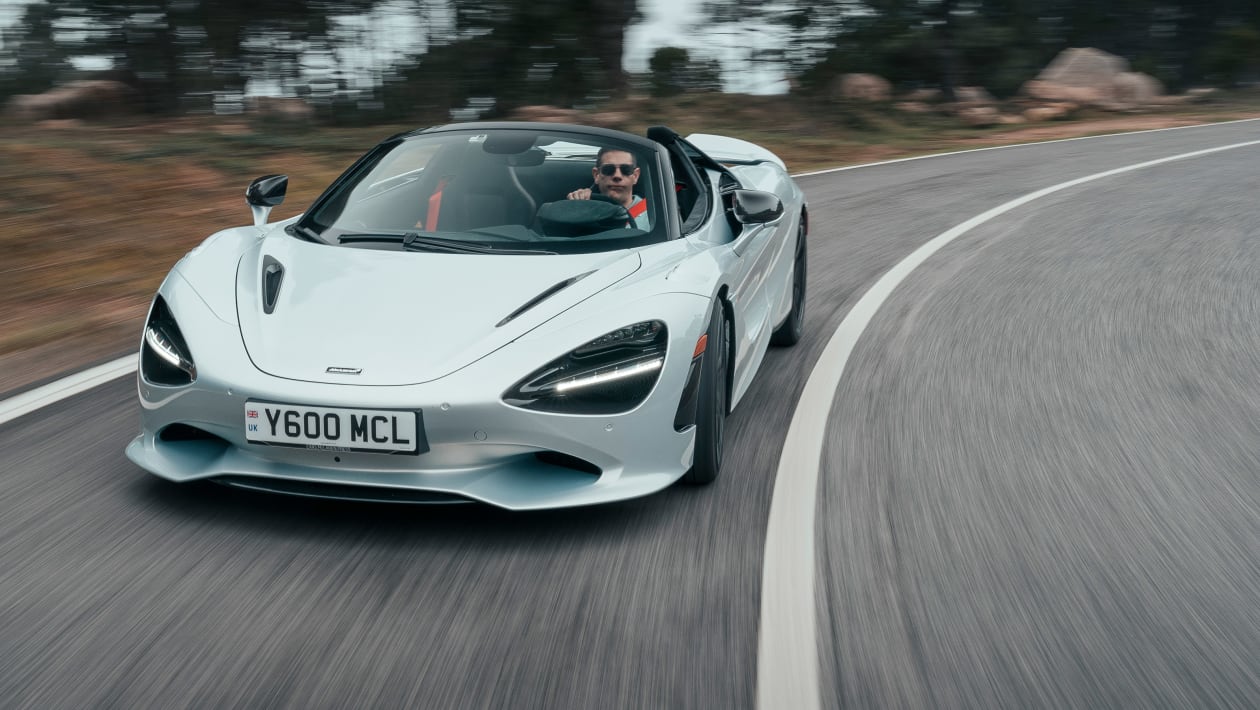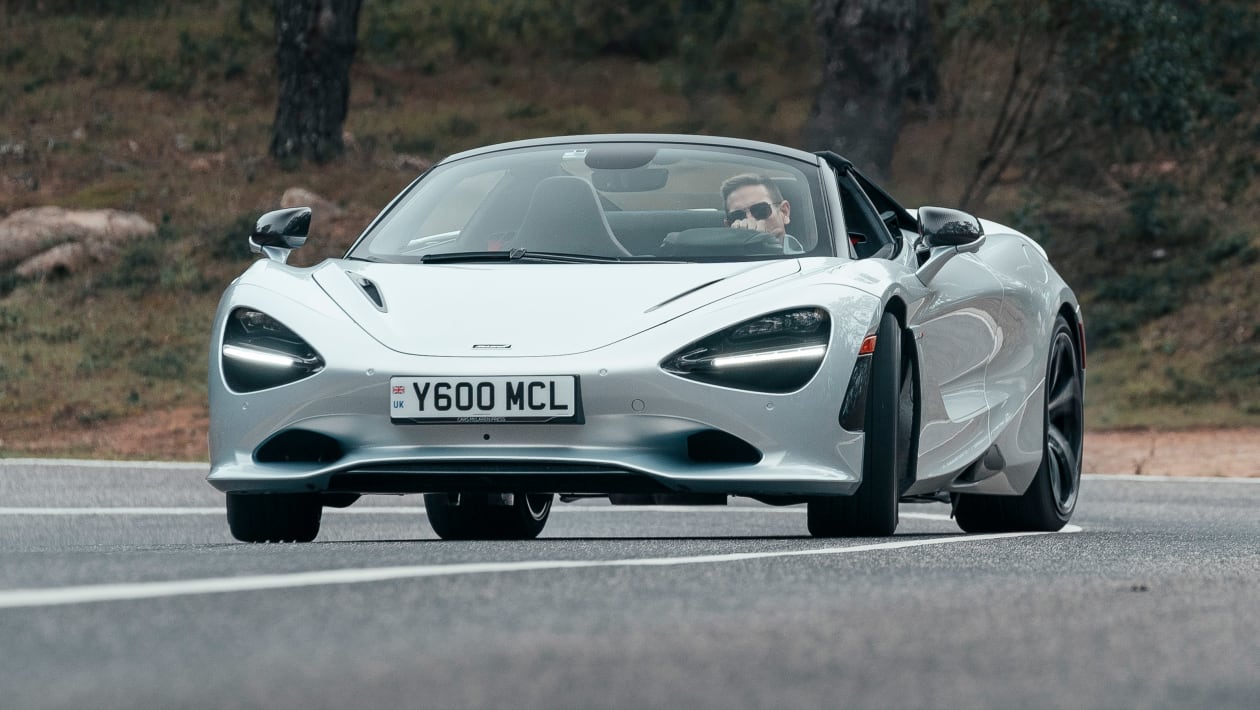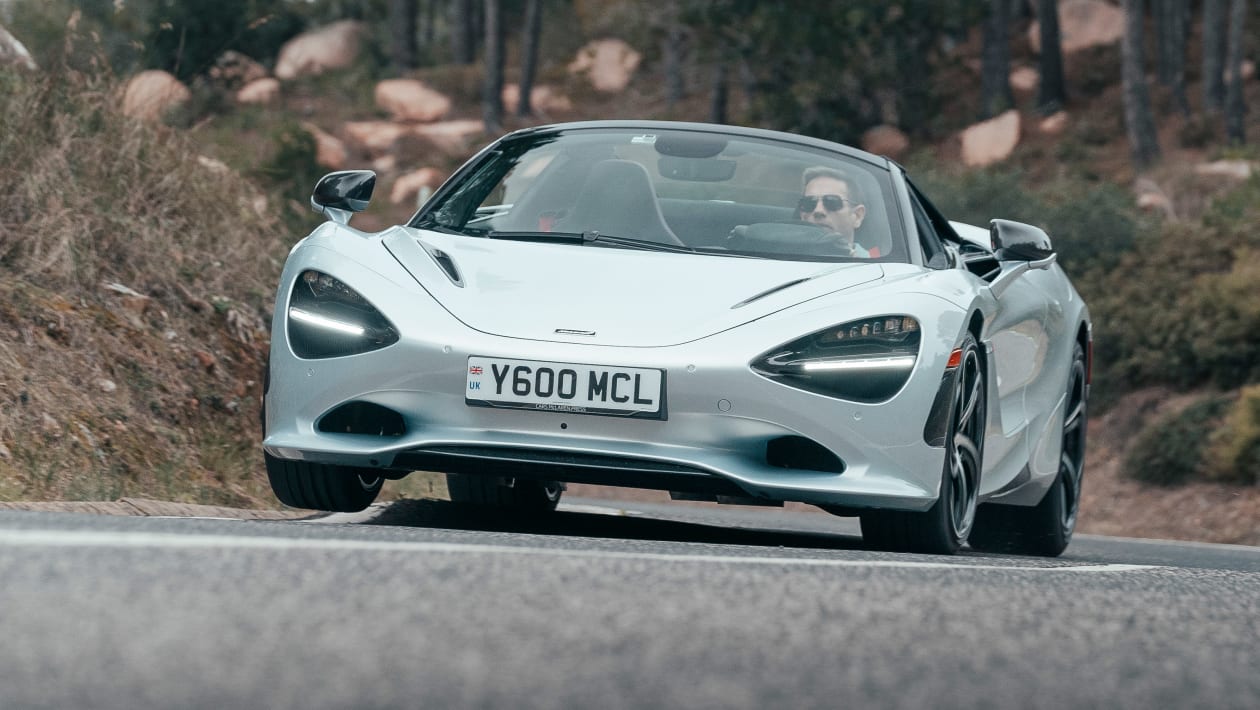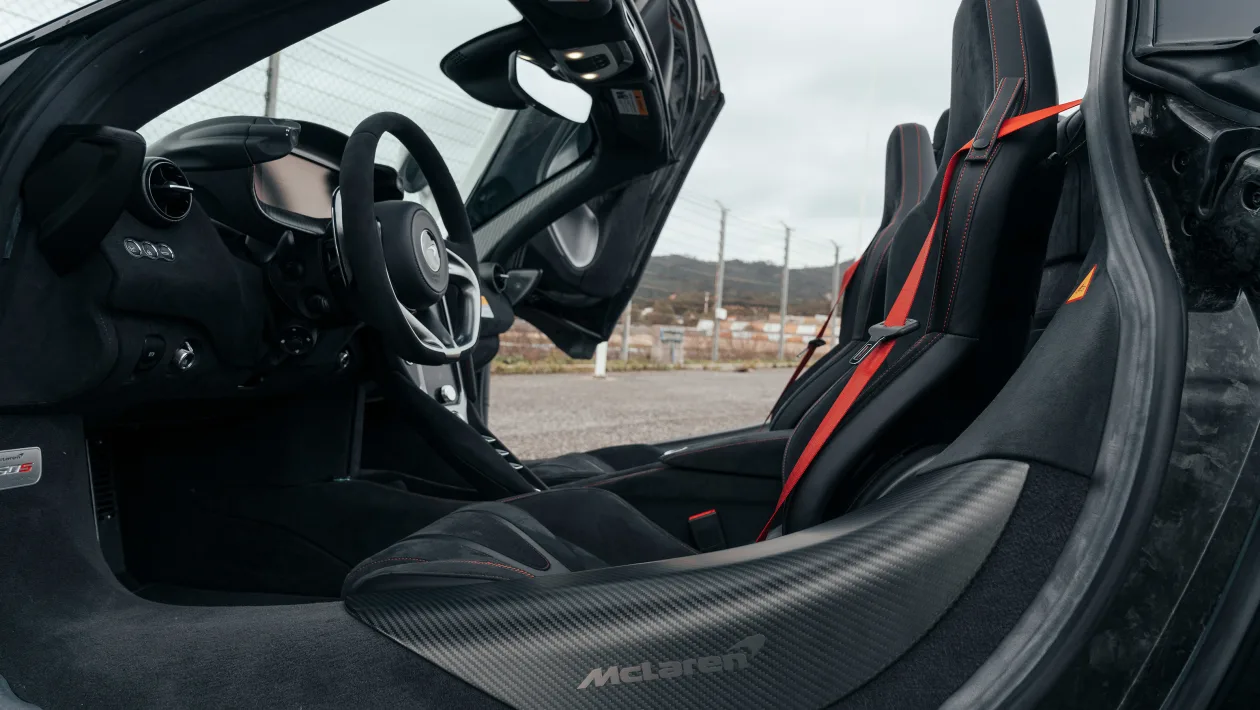Taking the best technical components from the 765LT, McLaren has created a V8-engined supercar that can be considered not only one of the best of its time, but the best of all time.
After the turmoil of launching its first hybrid supercar, the Artura, McLaren has reverted to something a little simpler when it comes to updating its 720S. There’s no complex hybrid powertrain, but rather they’ve cherry picked the best of 765LT and blended it with everything we’ve raved about on the 720S.
There’s more power from the 4-litre V8, peaking at 552kW (because we all know a 720S needed more power). Boost pressure is up as a result, the 765LT’s lighter pistons have been slotted in along with a high-flow fuel pump, a triple layer head gasket and an ECU map to manage it all. The M840T now sits on bespoke engine mounts, too, claimed to enhance the sound and feedback to the driver. Completing the powertrain upgrades are the 765LT’s shorter gear ratios.
In terms of design, McLaren calls it a comprehensive facelift rather than an all-new car, which for some will still be stretching it. The changes are subtle. So subtle that you might need a McLaren designer with you when you’re pointing out the changes to your mates. There’s an extended front splitter, the front bumper is lower and the openings in the distinctive eye-socket headlights have been tweaked to improve gearbox and charge cooler airflow. There are also a new pair of rear wheel arch vents, with the rear tyres more exposed to reduce pressure within the arches. The biggest change is the larger extended rear wing from the 765LT, with a 20 per cent increase in surface area and a 1.6kg reduction in weight. As with the LT, the active wing features a cutout to prevent heat damage and improve rearward visibility.
On the road the 750S enjoys all those brilliant McLaren traits that define their character. Before you even get going the cabin remains a work of wonder, planting you in the heart of the action, plugging you into the MonoCell carbon tub. There’s no rotating dial pack anymore, which is a shame, as the Artura’s fixed instrument binnacle feels a step down and means the drive mode controls are no longer set into the centre console stack, but as two semi-rotating controls on either edge of the binnacle. The hybrid car’s infotainment system is also fitted and works, which is a huge step up.
There’s a fluidity and suppleness to the ride, but it’s not as magic carpet as a 720S, and the softer front springs (by three per cent) and stiffer rears (four per cent) add an edge to the 750S. Not a jarring one, but one that reminds you that this is a tighter, more characterful McLaren. New geometry and changes to the damper settings, which are part of the company’s third generation Proactive Chassis Control, complete the upgrades.
The 765LT’s chassis hardware only builds on the 720S’ ability. Its steering, still hydraulic, still buzzing between your fingers as it encounters every surface, has a degree more weight around the straight ahead, but less kickback and is more direct as a result. Over any surface it remains measured and beautifully linear, the rate of response inspiring in a world of over-servoed EPAS systems.
Of course, it’s blisteringly fast on the road. The V8 delivers a fevered performance, its appetite for revs insatiable. It’s not a particularly musical powerplant, but it’s devastatingly effective. Such are the explosive gusts of turbocharged thrust, it’s slightly tricky to work up a flow with it – squeeze the throttle, boom!, you’re a hundred metres away from where you were just a blink ago, so you back off, take a breath, and repeat…
It can be tricky converting all that power into forward momentum when the wheelspin flares every time you hit a ridge. And all the while the steering stays eerily calm, and you have the feeling of being right at the pointy end of a ground-skimming fighter plane.
The core qualities of the 750S shine extremely brightly on track. Primarily the sheer performance on offer – it really is something to behold when you can let it run through several gears unencumbered – and the easy balance it displays even under duress. The other great 750S attribute is its lightweight construction and its consistency of performance. Where even the mighty Ferrari 296 GTB needs a battery-depleting ‘Qualifying’ mode to give its maximum, the McLaren is always running full power and has a power-to-weight advantage, too.
Rolling onto Estoril circuit there’s another immediate advantage over any of the competition: The fantastic driving position. It remains the absolute benchmark as an operating environment when you just consider the placement of the pedals, steering wheel and where you sit within the carbon tub. The fact that its controls are so much more straightforward than the Ferrari’s haptic mess isn’t felt especially here, but it’s nice to be in such a clean, simple environment when you’ve got all that power and torque to deploy.
The steering – faster than before but still much more measured than the 296 – is gorgeous. There’s more heft to it than in the 720S but the thin-rimmed steering wheel still imparts a sense of delicacy and is alive with feedback. Perhaps that means the staggering agility of the Ferrari remains just out of touch, but the McLaren feels more natural in its responses. It’s a trait I’m grateful for during the initial damp sighting laps. Brake feel remains a bit of a marmite point for the 750S. I enjoy the slightly long pedal travel as it helps with left-foot braking, but plenty of others who don’t want to adopt that practice find the system less confidence inspiring. The 750S has a new brake booster and vacuum pump for a slightly firmer feel, but if you’re used to a Porsche system the pedal will still feel long and a tiny bit inconsistent, too.
Even so, the first laps are vivid, hilarious and deeply thrilling. The torque delivery is unbelievable and the way the engine has the capacity to build on the initial big hit all the way to the rev limiter is staggering. The 750S has so much performance that comparing figures with any other car is a bit of a waste of time. If you need to go quicker than this, you’re slightly unwell. On track the more exaggerated upshift thump in Sport mode isn’t really helpful and can upset the balance of the car (and cause traction issues in the wet), but Track is much more effective. I don’t think a car with this amount of acceleration needs ‘drama’ injected in this manner (although I do love the ignition cut gunshot noises on the road in Sport).
The response and feel from the steering creates huge confidence. Whilst the 750S still tends towards gentle understeer and is less pointy than the 296, there’s a calm, locked-down feel that’s a notable step-up from the 720S. And with 552kW you don’t have to accept understeer should you want to bring the rear into play. In fact, just selecting Track for the Handling mode is a huge help here, allowing you to input a slightly faster turn-in phase to excite the rear and then enjoy a very neutral balance. There’s no mechanical limited-slip differential in this car, as opposed to the Artura, but the Brake Steer system is very effective and the 750S never scrabbles for traction like a car with an open diff.
It just eats-up Estoril. There’s not quite the surreal, manic nature of the 765LT but it’s pretty close and retains the lovely split personality of the 720S. Drive it neatly and this car is blindingly fast and predictable but there’s the scope to really attack and feel it come to life as it demands more input and fast hands. Either approach is a huge thrill. Even better is that the 750S is offered on a Trofeo tyre, finally. This ramps-up the grip and traction but not at the expense of its on-limit manners.
Overall, McLaren’s new supercar is a compelling proposition on road and track. The performance is of the laugh-out-loud variety but the delivery is sweetly judged. The 750S is balanced and communicates clearly and it feels special simply because of the architecture of the car. Any concerns over the theatre of the engine disappear because it’s such an assault on the senses, too. McLaren’s new supercar shows that the progress made by hybrid models (both internally and by rivals) is impressive but ultimately blunted by weight and added complication. Simple, transparent and yet endowed with massive performance, the 750S is no revolution, but remains very special in its own right.




